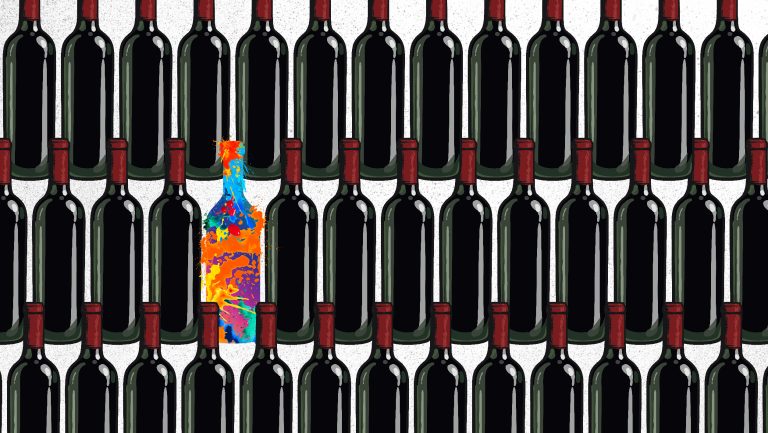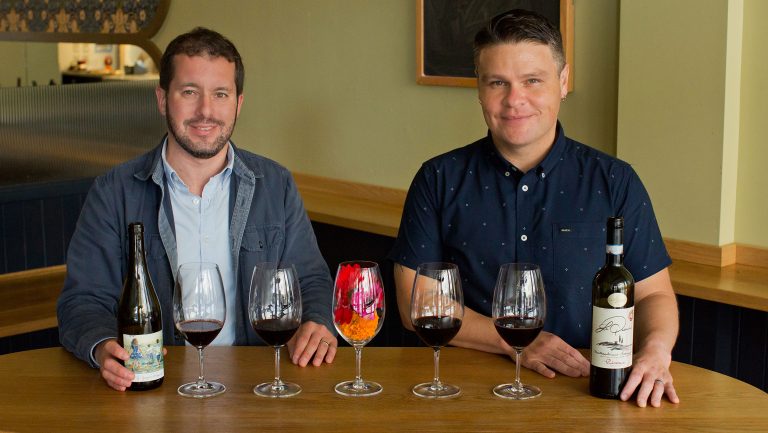At retail shops, some bottles of wine fly off the shelves faster than others. Pinot Noir, Sauvignon Blanc, and Pinot Grigio typically find their way pretty easily into the hands of loyal customers. And it’s really no mystery why—most customers like to feel that they’re making a safe choice when buying wine. Venturing into the unknown, whether in grape varieties or viticultural regions, can be daunting. While this penchant for the safe bet can help workhorse wines drive your bottom line, it can be detrimental to the sales of those bottles of Mencía, Friulano, and other niche wines that you’re more passionate about. So how does a retailer coax customers into venturing beyond their comfort zone? SevenFifty Daily asked five retailers nationwide to weigh in on the topic. Here’s their advice.
1. Offer Tastings
“The first way [to get customers out of their comfort zone] is to offer tastings,” says Chuck LeFevre, the owner of Esquin Wine & Spirits in Seattle. LeFevre says that the store offers two to three tastings a week to help customers broaden their palates free of charge. “Customers are hesitant to buy a wine in an unfamiliar category without tasting it first,” he says. “Allowing them to taste these wines totally breaks down this barrier.”
2. Build Relationships
LeFevre also emphasizes the value in establishing relationships with clients, noting that working hard to get to know customers’ personal tastes generally pays off. “If they trust you and the wine selections you recommend,” he says, “and if there’s something you think they’ll enjoy outside of their normal comfort zone, a good percentage of the time they’ll try your recommendation.” LeFevre personally experienced how well this can work when a colleague presented a wine to him that was outside his own comfort zone. “Our international buyer recommended a French red in a category I would not normally buy,” he says. LeFevre bought it, took it home, and drank it—“It was absolutely delicious.” The next day, he asked his buyer to get more of it.

Don’t miss the latest drinks industry news and insights. Sign up for our award-winning newsletters and get insider intel, resources, and trends delivered to your inbox every week.
3. Strike Up a Dialogue
While most customers will buy what they already know, this default pattern can be changed with a simple conversation. “The best way to get a client to be adventurous in their wine selections is to talk to them,” says Rhonda Chandler of La Cave Warehouse in Dallas. She recommends asking clients about the bottles they normally gravitate toward, what they drank with dinner the night before, or wines they’ve recently enjoyed at friends’ homes. She says that one great recommendation can lead to a trusting business partnership: “If you can get them to try one new bottle they enjoy, it’s a beginning to a relationship that they’ll come back for.” She also notes that asking customers what they don’t like in a wine can be just as important. “The attempt is to try to get close [but] still nudge them out of their comfort zone, all while introducing them to a new producer, region, or variety.”
4. Make a Counteroffer
Another good way to introduce new wines is to offer an alternative selection when a customer asks for something specific. “If someone asks for a California Chardonnay,” says Dan McCarthy, of McCarthy & Schiering Wine Merchants in Seattle, “you can point out a bottle and say, ‘Or you might try a bottle of white Burgundy.’ He also suggests asking leading questions like, “Are you matching this with a specific meal?’” Simply asking customers whether they’ve tried something or not is a friendly way to test the waters with an alternate suggestion. “The key behind these [questions] is to let the buyer make the choice,” he says. “You learn very quickly whether they’re receptive or not.”
5. Make Affordable Suggestions
“We find that customers come out of their comfort zone when cost isn’t prohibitive,” says Alex Basich, the co-owner of The Noble Grape in Chicago. He says that it’s easier to get clients to try interesting wines from lesser-known regions when the bottles cost $20 or less. “They’re willing to try Tannat from Uruguay or Plavac Mali from Croatia when the gamble doesn’t cost them too much,” says Basich. He adds that knowing your customers, having them trust you, and not being “too eclectic” can also help ensure success. For buyers, he suggests seeking out good value and quality bottles from smaller, lesser-known regions, such as France’s Jura or the country of Georgia.
6. Create a Theme
Braden Dodds, of Dodds Wine Vault in Castle Rock, Colorado, believes that a rich personal experience with a wine can increase the odds that the customer will enjoy it. He cites his first encounter with Grignolino, a red wine made from an Italian grape of the same name that would be off the radar for many wine drinkers, as an example. “I first enjoyed Grignolino while dining at a small cafe in the town of Barbaresco,” he says. “I was sitting at an old wooden table on an outdoor patio, [savoring] the local cuisine, when the waiter brought over a carafe of fresh Grignolino. How could I not appreciate the wonderful aromas and flavor profile?” Dodds relished being introduced to a new wine under those circumstances, but he points out that simply handing a mysterious bottle of wine to a customer isn’t necessarily going to do the trick. If you can help the customer create some ambience around it, he says, he or she will be more likely to enjoy it.
“I realize not everyone can just pick up and travel to a small town across the world to see if they like a wine,” he says. “So I tell the customer to get as close as possible at home.” He recommends that a customer watch a good Italian-themed movie the night before trying a new, obscure Italian wine. He also suggests things like reading about the history of the grape and preparing an authentic dish from the region while listening to the area’s traditional music. “By the time you sit down to enjoy your wine with the meal,” Dodds says, “your palate should be primed and ready to appreciate it.” He concedes that there’s no guarantee of this, but he adds that at least the wine is “being given a fair chance.”

Dispatch
Sign up for our award-winning newsletter
Don’t miss the latest drinks industry news and insights—delivered to your inbox every week.
Vicki Denig is a wine, spirits, and travel journalist based between New York and Paris. Her work regularly appears in Decanter, WineSearcher, Food & Wine, and more. She also works as a content creator / social media manager for a list of prestigious clients, including Beaupierre Wine & Spirits, Corkbuzz, Veritas Imports, and Crurated.







